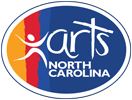NC Classroom Size Requirements and Arts Education
Arts NC has been active on the issue of K-3 classroom size requirements and how it relates to Arts Education (visual, music, theatre, dance) with purposeful advocacy and strategic alliances. Our partnerships, planning, and perseverance will continue to shape outcomes on these issues as we work to ensure that every student has equitable access to a Comprehensive Arts Education by qualified instructors as part of well-rounded education, which is the right of every child in North Carolina.
On February 8, 2018, Senate Pro Tem Phil Berger, and House Speaker Tim Moore, along with leadership from Education Committees in both houses of the NC General Assembly (NCGA), unveiled HB90 with the support of the NC Association of School Administrators (NCASA), an organization representing superintendents and principals across the state. This legislation was in significant alignment with Arts North Carolina’s position on this issue, as well as the NC Arts Education Leadership Coalition’s (NC AELC) Position Statement, of which Arts NC is a signatory.
HB90 became law (SL 2018-2) on March 16, 2018 without Governor Cooper’s signature and addresses, among other things, the class size requirements created by GS- 115C-301 and the funding of “Program Enhancement Teachers” (PETs), which include music, visual art, theatre, and dance instructors as well as health, physical education, and world languages. While Arts NC does not view these subjects as enhancements, but instead as a vital component of the sound basic education that is the right of every NC child and integral to a Comprehensive Arts Education (CAE), we may use this term for clarity in our advocacy with the NCGA and others.
This law does provide some funding for K-5 Arts Educators (and other PETs), however it allows that money to be spent on classroom teachers by local authorities after 2022. It does not provide any additional funding for Grade 6-12 Arts Educators, or specifically address the need for the facilities and classrooms needed to accommodate the changes to class size requirements. Also, as local authorities find ways to meet the new K-3 requirements over the next several years, it is likely that additional funding cuts will be made to for Grades 4-12, particularly in Middle and High School Arts Programs, which are not required by state law. The specific education components of SL 2018-2 are:
- Provides a four-year phase-in to reach K-3 class size caps that otherwise were scheduled to take effect for the 2018-19 school year. This includes new K-3 class size requirements that did not change from 2017-2018 requirements for the 2018-2019 school year of the phase-in and are as follows:
Year Grade(s) District Average Individual Maximum 2018-2019 K-3 20 23 2019-2020 K-3 19 22 2020-2021 K-3 18 21 2021-2022 K 18 21 1 16 19 2-3 17 20 - Fully funds 3,503 K-5 PETs (including Visual, Music, Theatre, and Dance) through a new allotment established through a four-year phase-in, front-loaded the year before changes occur in K-3 class size requirements, as follows:
- 2018-2019 – Provides $61.4 million in recurring funds to support 25% of full funding needed to provide one K-5 PET for every 191 students (1:191 ratio).
- 2019-2020 – Increases this allotment’s funding to 50% of amount needed for 1:191 ratio.
- 2020-2021 – Increases this allotment’s funding to 75% of amount needed for 1:191 ratio.
- 2021-2022 – Increases this allotment’s funding to 100% of amount needed for 1:191 ratio
- Places new restrictions on the Classroom Teacher allotment effective 2021-2022 to prevent these funds from covering K-5 PETs, which will be fully covered in the new allotment in that year (estimated over $245M annually by 2021-2022). K-5 PET allotment funds may be used for classroom teachers but not vice versa.
- Allocated Classroom Teacher funds will continue to cover K-12 classroom teachers as well as Grades 6-12 PETs (including Visual, Music, Theatre, and Dance) as they are currently.
- Exempts all “enhancement” classes in Grades K-12 from class size restrictions and caps, thereby eliminating the need for districts to seek waivers for these classes as required under current law.
While Arts North Carolina was glad to see our position reflected in this law, we have serious concerns about its impact and the continuing decline of investment in Arts Education by local school districts. We will continue to monitor the situation, collaborate with the organizations that represent our Arts Educators, and to work for equitable access to Comprehensive Arts Education for ALL North Carolina students.
